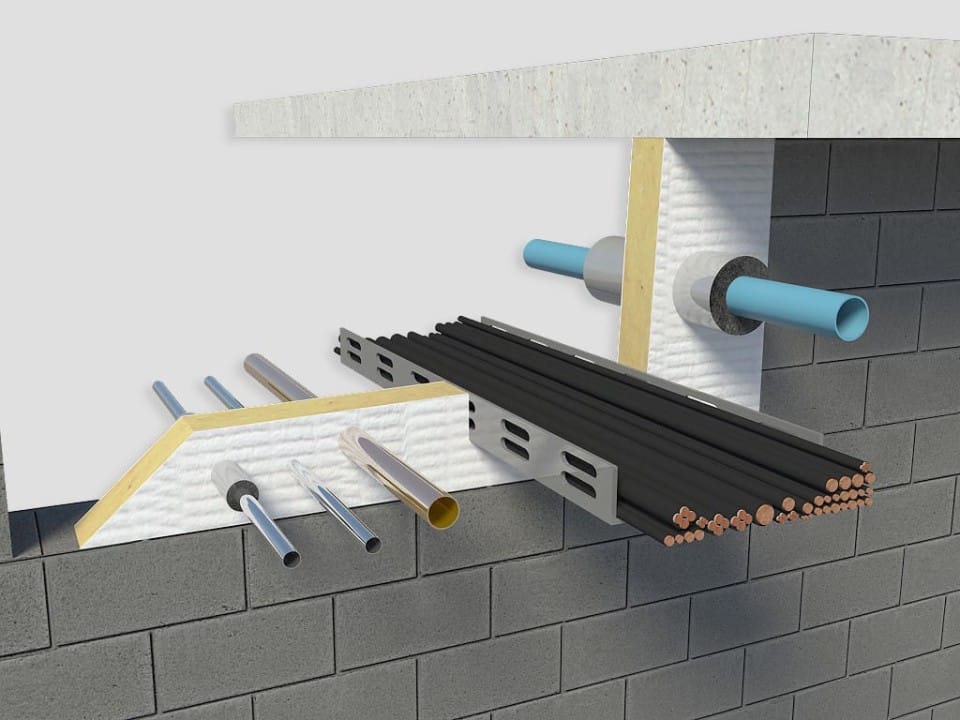Few things are as crucial to building safety as efficient fire stopping. Towering skyscrapers and elaborate designs are changing urban landscapes, making protecting buildings from the destructive power of fire more critical than ever. The vital role that fire stopping plays in protecting buildings is examined in this article, along with the need for solid fire prevention techniques and the introduction of novel solutions like fire curtains.
Having An Understanding Of Fire Stopping
Tools and materials intended to halt or restrict the growth of fire within a structure are referred to as “fire stopping.” This involves containing and compartmentalising fire breakouts by carefully placing seals, fire-resistant barriers, and other protective features. The main objectives are to minimise smoke and flame damage and offer residents a secure exit path.
The Importance of Fire Stopping in Building Security
Strong fire stopping is crucial for structural safety as cities change with contemporary design and urbanisation. Fire stopping involves carefully placing materials and procedures in buildings to delay or halt fire spread. The primary purpose is to save lives, property, and money from fires. Fire stopping is essential to building safety and resilience for many reasons.
Live Safety
Firefighting is about saving lives. Keeping flames under control is essential for safe evacuation in a fire. Effective fire stopping devices, such as fire-resistant barriers and doors, allow for escape, minimising injury and death.
Preserving Property
Firefighting tactics reduce property damage. These procedures compartmentalise fires to avoid fast building damage. Fire-resistant walls, fire doors, and flooring contain fires and minimise damage, protecting precious items.
Mitigating Economic Impact
Good fire stopping has economic advantages beyond safety. Fire damage may cost businesses and property owners money in repairs, insurance premiums, and business disruption. Strengthening fire prevention becomes a strategic economic choice, reducing these costs.
Prevention of Fires
Fire stopping is essential to avoiding structure fires. Fire-resistant doors, walls, and flooring are used. These barriers slow fires and reduce smoke, facilitating firefighters and lowering damage.
Innovative Modern Challenge Solutions
Technological advances have led to fire curtains to supplement conventional fire-preventing methods. Fire curtains are versatile and attractive fire door alternatives. Their unobtrusive incorporation into building designs improves safety and aesthetics, demonstrating forward-thinking fire prevention.
Building Community Resilience
Fire prevention efforts strengthen community resilience. A well-protected built environment helps communities recover faster from unexpected calamities. By protecting structures against flames, cities, and neighbourhoods grow more robust and better prepared for future problems.
The Advantages Of Fire Curtains
There are several benefits of using fire curtains for building safety. Their ability to blend in with various architectural styles gives architects more creative freedom. Furthermore, fire curtains save space since they hide until required, eliminating the unsightly visual effect of permanent fire doors. This innovative method of putting out fires improves safety while adding to contemporary structures’ overall appeal.
Setting Up And Keeping Up With Fire Curtains
The efficacy of fire curtains depends on correct setup and ongoing maintenance. The curtains are easily incorporated into the building’s fire stopping system and exceed regulatory criteria, thanks to the expertise of certified personnel. Regular maintenance and inspections also ensure that the curtains will open quickly in the case of a fire, offering dependable protection when it matters most.
Rules and Compliance for Fire Stopping
Fire stopping laws and compliance are crucial to building safety and occupant health. Governments and regulatory agencies set strict fire safety standards to guide building design, construction, and maintenance. Architects, constructors, and property owners must know and follow these requirements by law and duty. Fire stopping rules, compliance, and their significance in safer constructed environments are discussed here.
Regulatory Framework
Building rules and standards from municipal, national, and international agencies include fire stopping restrictions. These laws are updated periodically to reflect technological advances, building practises, and prior accidents. The aim is a complete foundation for fire safety throughout a building’s life cycle.
Lawfulness
Best practice and legal obligation: follow fire stopping legislation. Building laws compel builders and property owners to meet fire safety standards. Failure to comply may result in penalties, creating use limitations and fire-related liabilities.
Building Design and Construction
Fire-stopping standards include building design and construction. This involves using fire-resistant materials, installing fire doors, walls, and floors, and adding fire stopping devices to halt flames and smoke. Creating safe buildings from the ground up requires design and construction compliance.
Inspect and Maintain
Compliance with fire-stopping rules continues after construction. Fire stopping elements need regular inspections and maintenance to be effective. Fire doors, seals, and other fire-resistant components must be regularly inspected for wear and damage. Proactive maintenance extends fire stopping measures.
Professional Certification and Expertise
Compliance sometimes requires fire safety and building rules experts. Certified professionals must install fire-stopping measures to fulfil the rules. Certification ensures that installed systems are dependable and fire-resistant.
Technology and Innovation Evolution
To accommodate new technology and developments, fire stopping rules change. As fire curtains become available, rules may be revised to incorporate integration criteria. Monitoring these developments is crucial for regulatory compliance and using the most effective fire-fighting methods.
Public Safety And Community Health
Fire stopping rules are about public safety and community well-being, not legality. Building owners and construction professionals must prioritise occupant safety and build community resilience to fire-related concerns.
The Effects of Efficient Fire Stopping on the Economy
Beyond the short-term safety gains, investing in solid fire stopping measures, mainly cutting-edge fixes like fire curtains, has financial ramifications. Mitigating fire-related damage minimises company disruption, decreases insurance rates, and lowers the cost of rebuilding and repair. As a result, companies and property owners have a stake in promoting efficient fire stopping as a wise financial move.
In Summary
Emphasises how crucial fire stopping measures are to the construction of modern buildings. Incorporating inventive solutions such as fire curtains is becoming increasingly important as cities expand and architectural landscapes become more intricate. Effective fire stopping is a priority that requires investment and coordination from everyone. It protects people and property and strengthens and sustains contemporary urban landscapes. By adopting technological innovations in fire prevention, communities can enhance safety and guarantee a more secure future.

Paul Petersen is a seasoned home improvement expert and DIY enthusiast with over 20 years of experience in the industry. He began his career as a carpenter, honing his skills in woodworking and structural design. Over the years, Paul expanded his expertise to encompass a wide range of home renovation projects, from kitchen remodels to landscape design.

